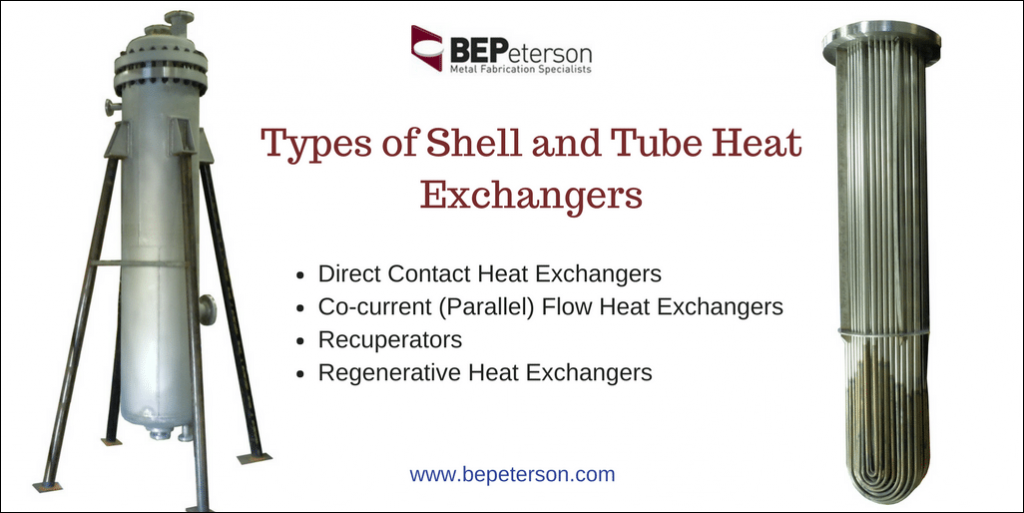Shell and tube heat exchangers are the most widely used heat exchanger type in a number of different industries. These heat exchangers are constructed using several parallel heat exchanger tubes. Tube sheets are used to hold these heat exchanger tubes firmly in place. These tubes are placed in a shell. The pattern of flow through a shell and tube heat exchanger can have a number of different configuration options. Be it any configuration, the design of these heat exchangers is such that one fluid passes through the shell (and is called shell side fluid), while other fluid passes through the tubes (and is called the tube side fluid). The heat exchangers have tube walls, which allow the exchange of heat between two fluids. The overall heat transfer coefficient of the heat exchanger depends on the configuration you choose. There are different types of shell and tube heat exchangers, which are used in a variety of different applications. What are these types? Where are these heat exchangers used? Read this post to know.

What are the Different Types of Shell and Tube Heat Exchangers?
There is a wide range of shell and tube heat exchangers available across the market. Each type has its own set of features, pros, and cons. Here are some common types of shell and tube heat exchangers, which are popular in different industries:
1. Direct Contact Heat Exchangers – As the name suggests, in the direct contact heat exchangers, there is a direct contact between hot and cold fluids. There is no physical barrier present between them. This allows the fluids at different temperatures to mix directly. As a result of this, heat and mass transfer takes place simultaneously. A cooling tower comes under these types of heat exchangers.
2. Co-current (Parallel) Flow Heat Exchangers – In these types of heat exchangers, both the hot, as well as the cold fluids flow in the same direction. The difference in the temperature of the hot and cold fluids continue to decrease consistently. The change in temperature occurs from one end to the other.
3. Recuperators – Recuperators are among the most widely used types of heat exchangers. Evaporators used in automobile radiators and ice plants come under these types of heat exchangers.
4. Regenerative Heat Exchangers – This is a popular type of heat exchanger. In a regenerative heat exchanger, the heat from a heat surface is stored and removed alternately. The surface is alternately moved in and out of the cold and hot fluid streams. At times, hot and cold currents are switched into or out of the heat surface.
Where are the Shell and Tube Heat Exchangers Used?
Heat exchangers have a number of beneficial features. Also, these equipment come in various configurations and types. This makes them ideal for use in a variety of applications. Following are some key shell and tube heat exchanger application areas, where shell and tube heat exchangers are used:
- Power Generation
- HVAC
- Marine Applications
- Pulp and Paper
- Refrigeration
- Pharmaceuticals
- Air Processing and Compressor Cooling
- Metals and Mining
We hope the information given above helps you get a better understanding of heat exchangers. This will help you in selecting the right type of heat exchanger based on your application requirements. When selecting a manufacturer for heat exchanger fabrication, look to an expert. BEPeterson is a leading supplier with abilities in manufacturing different types of heat exchangers. BEPeterson is an ISO 9001:2015 certified company and has been manufacturing vessels, tanks and heat exchangers for over 80 years. Let BEPeterson help make your next project worry free and buy with confidence. Contact us today!
